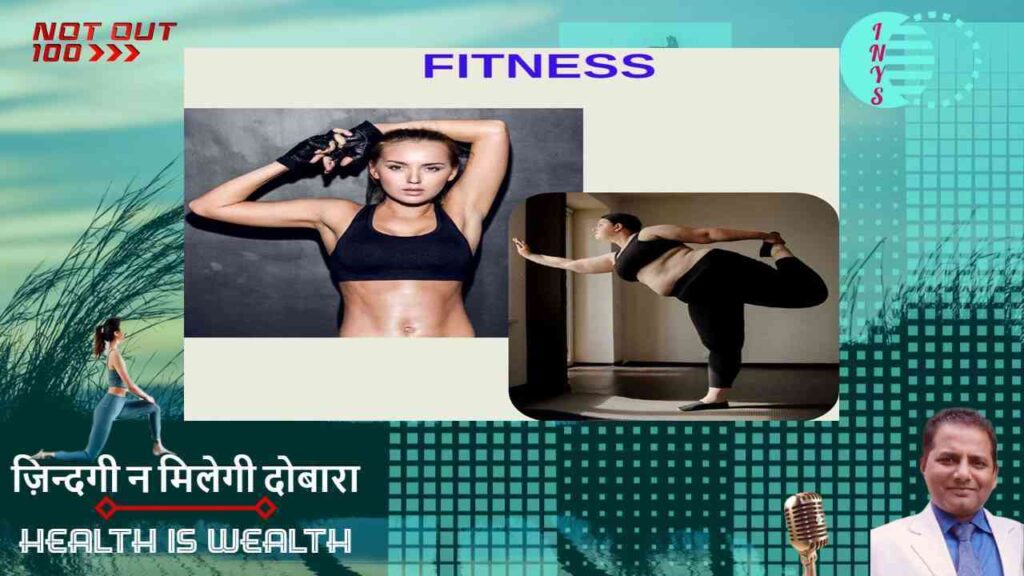
What is Fitness
Fitness can be articulated through the term “vigorous.” Numerous authors attempt to define fitness; however, these definitions often fall short of encapsulating the concept entirely. Instead, they may address specific dimensions or types of fitness, such as physical fitness, mental fitness, and spiritual fitness. A review of the Wikipedia entry for the term “fitness” reveals the absence of a definitive explanation of the concept.
The term “Vigorous” denotes strength, health, and an abundance of energy. For instance, the sun rises consistently each day, providing equal intensity and power. Similarly, children engage in play from morning until evening, exhibiting a sustained level of energy. To assess one’s fitness level, various fitness tests are utilized to determine an individual’s overall health and vitality. Two concepts that can more accurately elucidate the notion of fitness are as follows:
- Unfit
- Fit
When an individual decides to join the army, they must pass a fitness test. This indicates that physical fitness is evaluated against specific criteria designed to identify a suitable candidate. Similarly, a criterion is established to determine an individual’s fitness level. It is important to note that possessing a unique physique does not necessarily correlate with being psychologically fit. Understanding the concept of “unfit” is essential for explaining what “fitness” truly entails.
“The term unfit refers to a person who is not in good physical and mental condition.”
Imagine you visit a store to buy shoes. The shopkeeper measures your feet and provides you with a pair that corresponds to your size. However, upon wearing them, you realize they are uncomfortable. This discomfort may arise from the shoes not being suitable for your foot shape and size; it does not imply that the shoes are defective—they might fit another individual perfectly. However, if numerous people try on the same shoes and all find them uncomfortable, it suggests that the shape and size of the shoes are indeed inappropriate.
Now, let us examine how we assess fitness:
Physical fitness is divided into two parts:
–
- Health Related Fitness.
- Motor Fitness Component Related Fitness.
Health Related Fitness.
-
Body Composition: – Age, size, height, weight, body mass, muscle mass, body fat percentage, water content.
-
Strength: – Grip strength of the hand, strength of the legs, core abdominal strength.
-
Flexibility: – Flexibility of the spinal column, trunk, joints, and shoulders.
-
Cardiovascular Endurance: – Heart rate.
-
Aerobic and Anaerobic Capacity: – Lung capacity.
Motor Fitness Components: –
1. Power
2 . Agility
3 . Balance
4 . Coordination
5 . Accuracy
6 . Muscular strength
7 . Reaction Time
- Psychological Fitness: –
1.
-
Mental: – Stress, Anxiety, Depression, Mood Variability.
-
Emotional: – Joy, Sorrow, Isolation.
-
Behavioral: – Anger, Self-centeredness, Motivation, Learning Processes, Attitudinal Perspectives, Cognitive Perception.
-
Interpersonal: – Romantic Attachment, Infatuation, Unreciprocated Love, Companionate Love, Affectionate Intimacy.
-
Cognitive: – Intelligence Quotient, Linguistic Ability, Concentration, Memory Function, Perceptual Skills, Positive and Negative Thinking, Problem Solving.
- Biological: –
- Genetics,
- Brain Structure.
- Biochemistry
Health Related Fitness
Health-related fitness is closely connected to an individual’s physical health. Numerous activities can assist individuals in maintaining their health, including walking, running, swimming, playing sports, gymnastics, yoga, and exercise routines. It is important to recognize that fitness levels can vary significantly from one person to another. To evaluate an individual’s fitness level, researchers have developed various assessment tools. Below, we outline how to assess health.
Body Composition: Factors such as age, size, height, weight, body mass, muscle mass, body fat, and water content are essential components of body composition. Through research, body composition metrics have been established to identify potential deformities in the aforementioned variables.
Fitness Exercise Guidelines by Age Group:
-
Preschool Children (3 to 5 Years)
-
Children and Adolescents (6 to 17 Years)
-
Adults (18 to 60 Years)
-
Older Adults (60 Years and Above)
-
Individuals with Disabilities (All Ages)
-
Pregnant Women
Pre School Children (3 to 5 Years)
-
Health-related fitness is fundamentally connected to an individual’s physical well-being. Numerous activities aid in maintaining one’s health, including walking, running, swimming, playing sports, gymnastics, yoga, and general exercise. Each person’s fitness level varies, and scientists have developed various tools to assess these levels. Let’s explore how we can evaluate health.
During childhood, coordination between muscles and the mind is crucial. Children naturally engage in play, adeptly manipulating objects in sports. They thrive in group settings, with schools serving as prime environments to interact with peers. Playgrounds, with swings and slides, are particularly appealing to them. Educational games focusing on colors, numbers, shapes, and early phonics are effective teaching aids. Additionally, children enjoy nature-based activities, often playing in the dirt or water. Key fitness activities for this age include running, swimming, swinging, jumping, and climbing.
-
Children and Adolescents (Ages 6 to 17)
At this stage, cycling and skating are favored by children, and preferences in games may vary between girls and boys. Boys commonly gravitate towards football, judo, basketball, cricket, and running, while girls tend to enjoy walking, gymnastics, swimming, cycling, and dancing. Yoga and physical exercises are beneficial for individuals of all ages.
-
Adults (Ages 18 to 60)
For adults, mind games like chess and card games are popular among both genders. Between ages 18 and 24, badminton is often chosen by girls, while boys typically prefer combat sports. Walking and yoga are excellent fitness exercises for individuals aged 30 and above. Fitness in this group can vary depending on age and profession, with body posture significantly influencing health. A wide range of indoor and outdoor activities provides enjoyment, as the primary goal of exercise is to maintain fitness.
Older Adults (Ages 60 and Above)
Exercise is particularly important for older adults, as the efficiency of bodily functions tends to decline, necessitating greater care akin to that required for a newborn child.
Common Health Issues for Individuals Over 60 Include:
-
Arthritis
-
Cancer
-
Heart Disease
-
Respiratory Issues
-
Osteoporosis
-
Diabetes
-
Immunodeficiency Disorders
-
Bone Fractures
-
Obesity
-
Stress
-
Oral Health Problems
-
Hormonal Imbalances
-
Digestive Issues
A well-structured diet and exercise program are essential for maintaining fitness levels in this age group. Personal care becomes vital, as generational gaps can contribute to stress.
Individuals with Disabilities (All Ages):
Exercise and game planning for individuals with disabilities should be tailored to their specific circumstances. Guidance from experts and healthcare providers is crucial for developing appropriate strategies.
-
Pregnant Women
Exercise during pregnancy should be tailored according to the trimester and the mother’s body mass index (BMI). Fitness and physiological assessments are necessary before suggesting any exercise regimen. Gentle exercises, such as joint rotations and walking, are generally recommended. It is imperative for pregnant women to consult a healthcare provider for a personalized exercise schedule.
-
Fitness video (Hindi)
Wamup video (Hindi)

What is Cardiovascular Endurance?
The term cardiovascular is related with the heart and the blood vessels of the body and endurance means a power of performance in challenging time periods.









